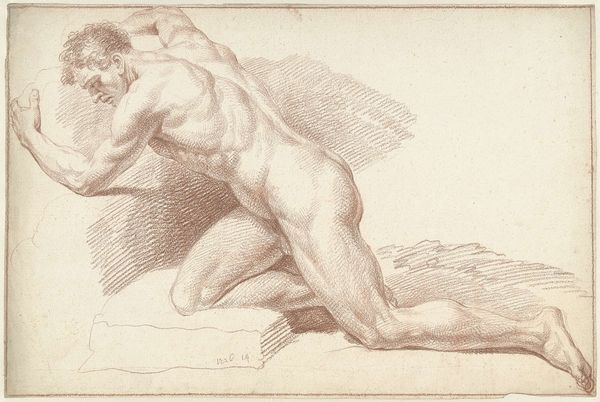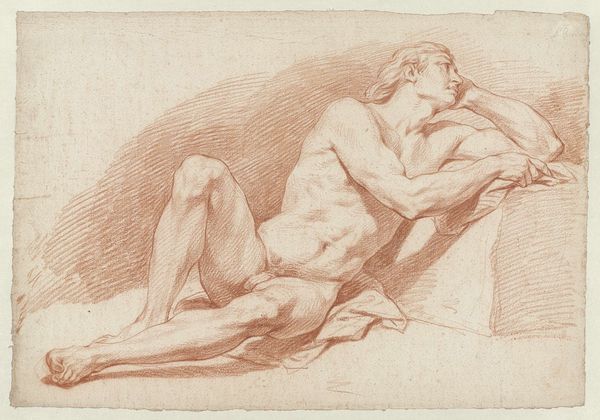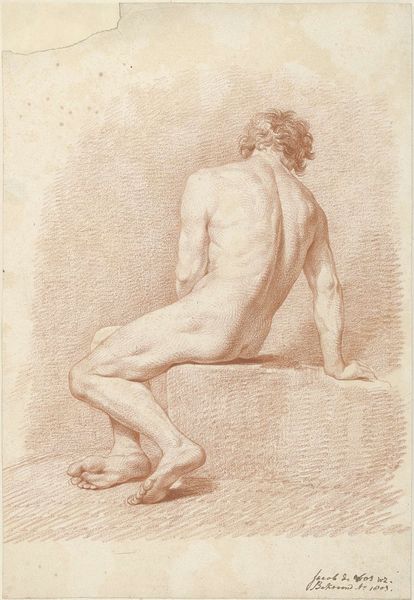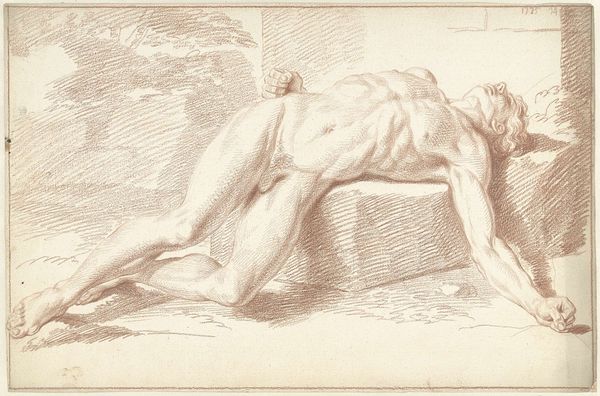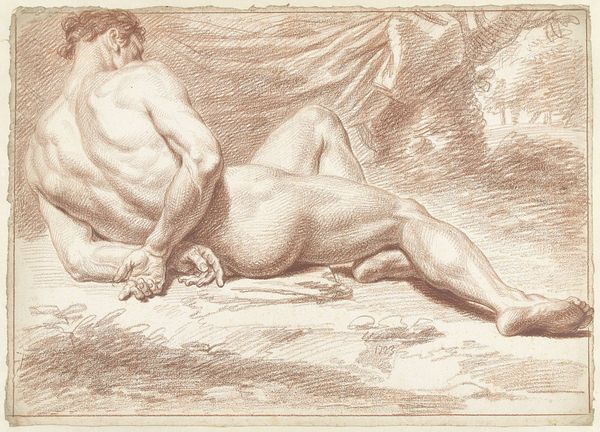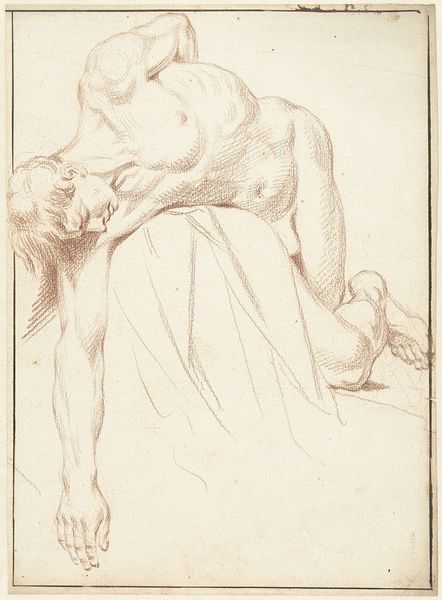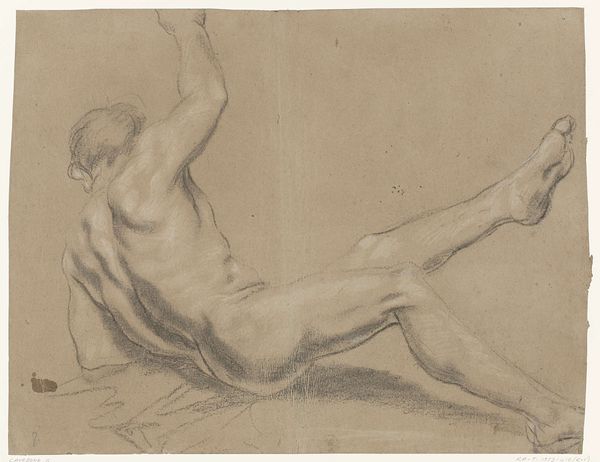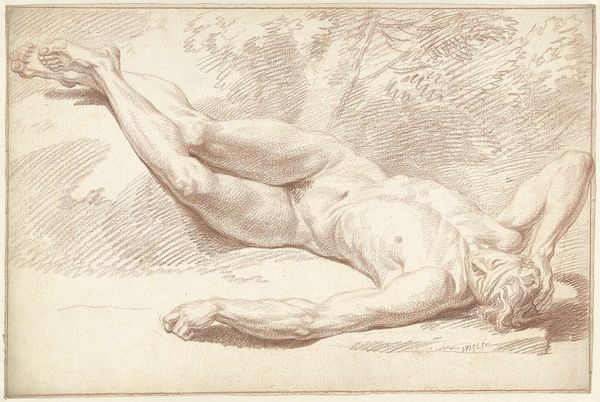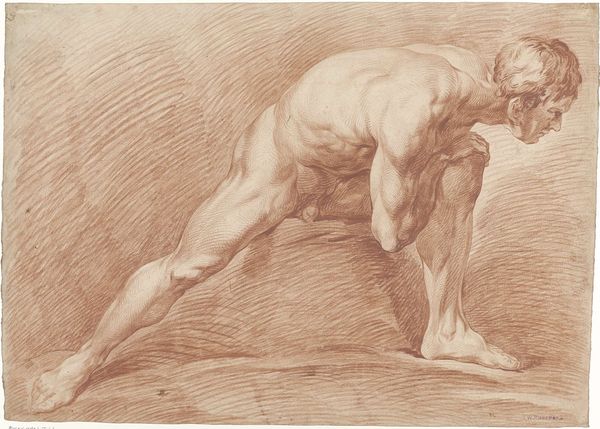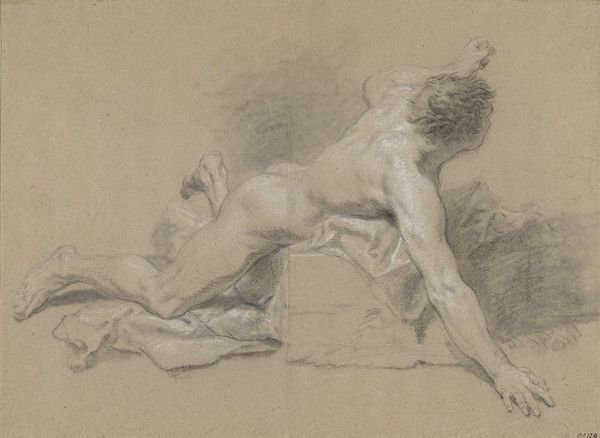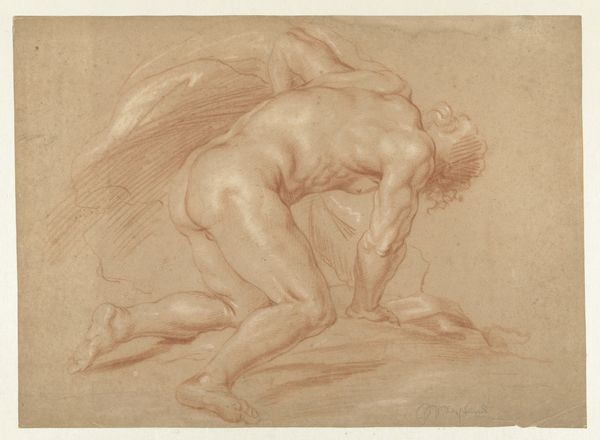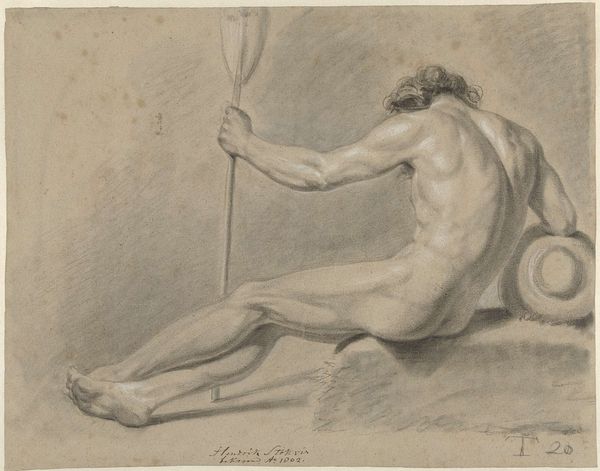
drawing, pencil
#
drawing
#
pencil sketch
#
figuration
#
pencil drawing
#
pencil
#
nude
#
realism
Dimensions: height 195 mm, width 298 mm
Copyright: Rijks Museum: Open Domain
Curator: This is "Kruipend mannelijk naakt," a pencil drawing by Jan Hoogsaat, likely created between 1664 and 1730. What’s your immediate sense of it? Editor: I see vulnerability. It's a striking pose, this crouching nude male figure, but there’s a rawness to the depiction, almost like he's caught between exertion and surrender. A study of exhaustion perhaps? Curator: Precisely. These academic figure studies were foundational in the training of artists. Drawing from life, especially the nude form, was seen as crucial for mastering anatomy and realism. Editor: Right. It was like an exercise in mastering the human form. The shading here is quite delicate, particularly across the back and shoulders. It creates a real sense of depth, making the figure feel three-dimensional. But I wonder, these kinds of studies, were they also about more than just anatomy? Was there also social stuff involved? Curator: Absolutely. The nude, particularly in a realistic style like this, has always been charged. Depictions of the male nude could explore notions of masculinity, power, even homoeroticism. It's important to remember who was commissioning and consuming these images. Often wealthy patrons and academics. Editor: So, in a way, owning these drawings, displaying them, became a symbol of power, artistic authority, a kind of cultural capital for those elites. Were the models generally poor? Or of a certain background? Curator: Many were, yes. Art schools weren't exactly bastions of diversity. But the drawing itself also tells us something about the artist's intent, wouldn't you say? The focus isn't just on perfect form; it’s on capturing a specific pose, a specific moment of strain or weariness. Editor: Agreed. There's an undeniable empathy in the rendering. It feels like more than just a technical exercise; it's an observation of human existence. Almost as though the artist is reaching to capture a sense of the sitter’s presence rather than perfect, smooth form. It’s thought-provoking how a seemingly straightforward anatomical study can carry so much emotional and cultural weight. Curator: Well, Jan Hoogsaat captured a feeling beyond the visible.
Comments
No comments
Be the first to comment and join the conversation on the ultimate creative platform.
